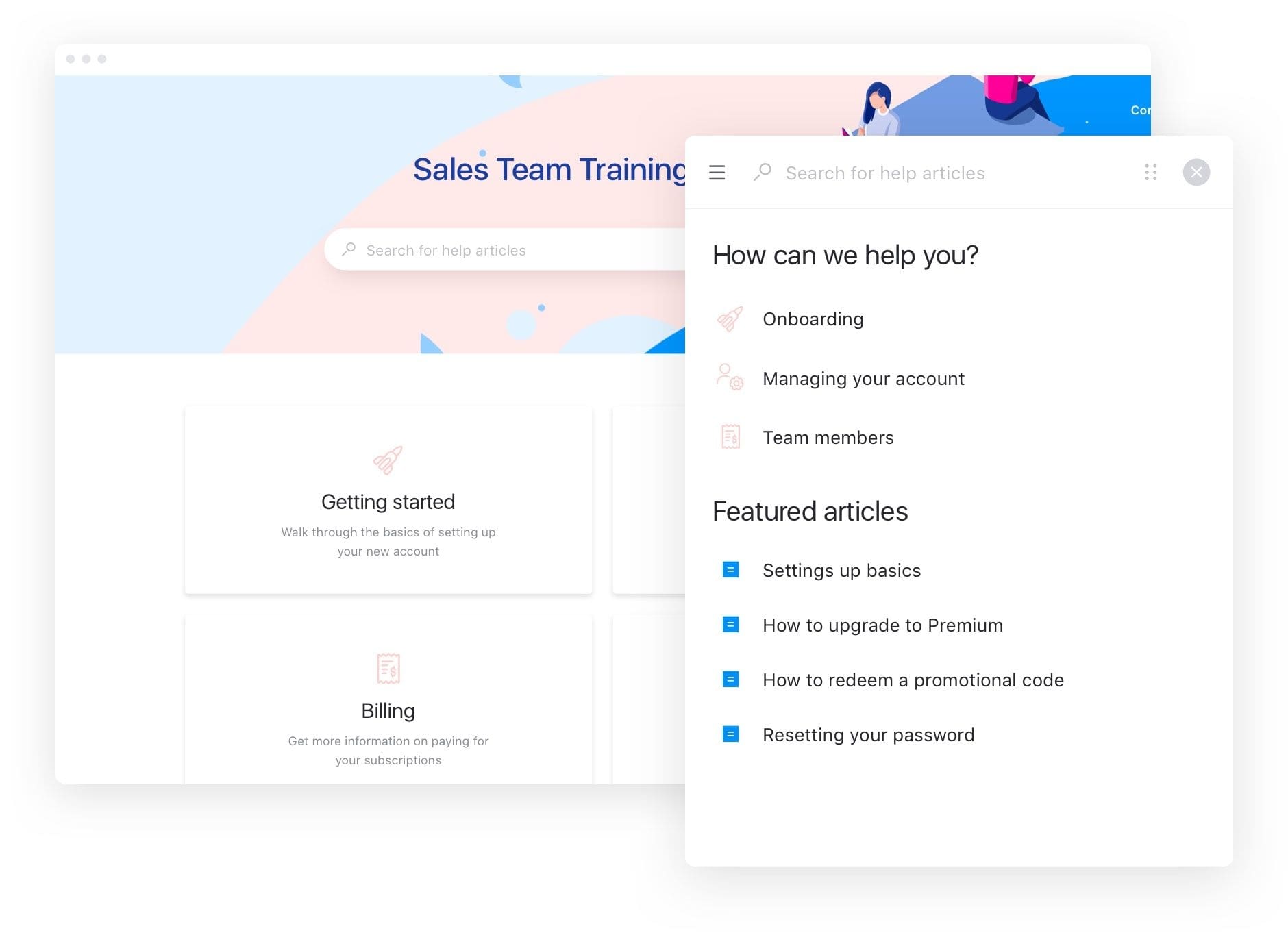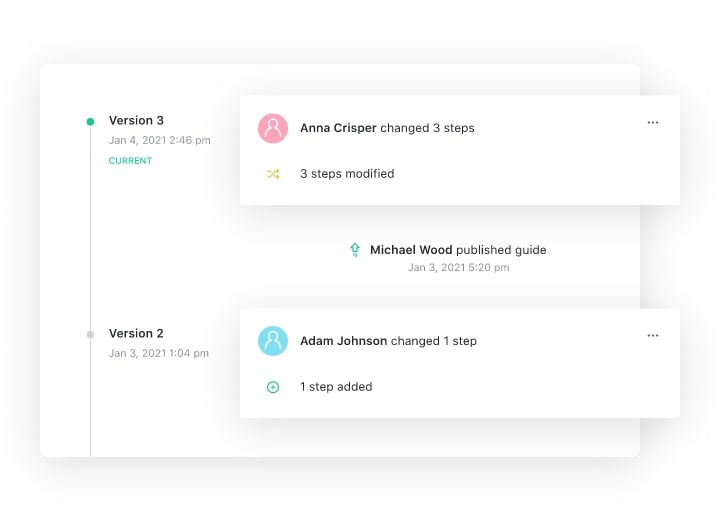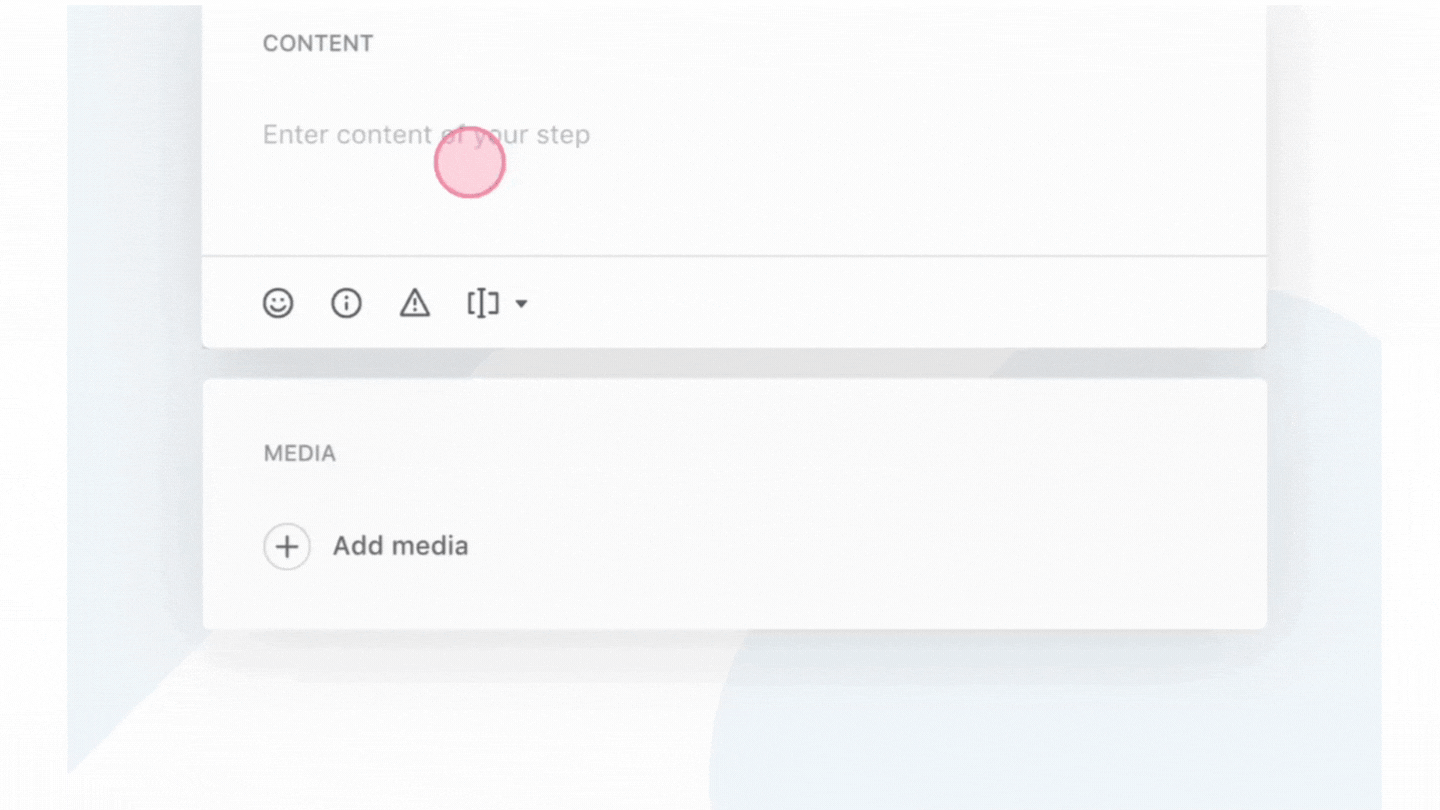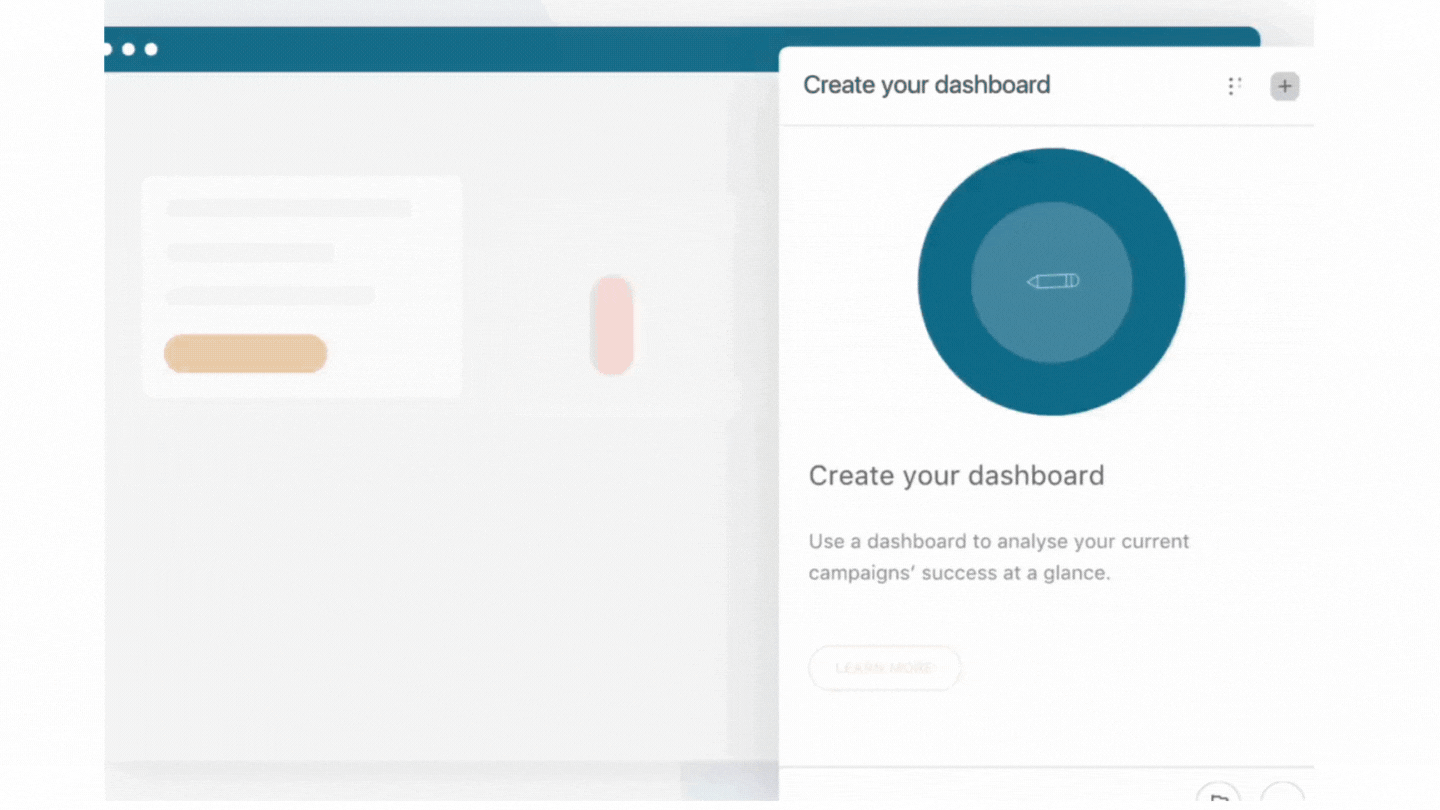As businesses scale, so does the complexity and sum of their organizational knowledge.
The key to maintaining a steady growth curve is documenting this knowledge to strengthen employees' expertise, eliminate operational ambiguity, improve decision making, and gain a competitive edge.
That explains why 75% of organizations* surveyed claimed that creating and preserving knowledge for their evolving workforces is critical to their success in the immediate future.
Designing a knowledge management process is the first step to effectively capturing and leveraging all your company knowledge. This article will give you an easy 7-step framework to build a foolproof KM process and strategically use knowledge.
Looking to create a knowledge management process tailored to your team? Stonly helps you create a knowledge base with interactive guides without coding expertise for any function or subject.
Start a free trial today.
What is a knowledge management process?
A knowledge management (KM) process enables organizations to capture, organize, create, transfer, and reuse knowledge to achieve business objectives. It leverages organizational learning as a strategic asset to boost employee productivity and build shared expertise.
A KM process defines the flow of knowledge within an organization from one person to another. Niall Thomas explains the concept and value of KM for organizations from a unique lens:
KM is how information is gathered, organized, and distributed across an organization. It includes the development of a knowledge-sharing culture—a collaborative approach to knowledge to reduce duplication, cut down on time spent on doing things, and simplify workflows within an organization to maximize productivity.
The KM process comprises two main pieces: information and experience. Information includes all the knowledge tucked away in emails, presentations, reports, books, and documents. Experience refers to an employee's learnings and insights—everything they've learned about a task or subject through practice.
An effective knowledge management process combines these two elements to capture, create, and share knowledge more constructively.
7 steps to design a foolproof knowledge management process
A good KM process democratizes knowledge by taking knowledge from the experts and converting it into a more accessible, consumable, and shareable format for everyone else. But designing the perfect process that matches your team’s collective knowledge needs and organizational goals can be tricky.
We’ve done the legwork to help you build a solid KM process from scratch in six steps:
Step 1: Establishing the stakeholders and objectives
The first step is defining why you need to manage knowledge within your organization. This will tell you:
- Where you’re losing knowledge
- How you can control this knowledge loss
Start by documenting your team's biggest challenges—areas where you're losing knowledge. Identify the business drivers behind these problems and align your KM strategy with these drivers to set measurable goals. Use short-term goals to pinpoint the areas of improvement and long-term milestones to create a bigger picture for the program. This exercise can prepare a solid groundwork for your KM process.
With better clarity into the objectives and key results (OKRs) for your strategy, it’s easier to get the buy-in from stakeholders and build more credibility for the program. That’s the approach Hans Visschers has followed to set a great example of a knowledge-driven culture at Phillips:
Our goal is to improve business outcomes by applying a structured knowledge management method. And so that's what we do every time we start with an initiative for a project, we look at what we will change. What are the objectives that we try to reach? How can expert profiling help in doing faster customer proposals? And so on.
Step 2: Audit current documentation to prioritize goals
Once you’ve listed your KM goals, review current documentation against these objectives. Take stock of your existing knowledge inventory by analyzing the overall organizational needs, knowledge-sharing processes, resources, and roadblocks.
This step is crucial to:
- Understand the knowledge gaps in your existing framework and organizational processes
- Map out the scope of improvement and prioritize goals
- Identify untapped opportunities for knowledge capture and transfer
- Maximize the utility of your KM program
A knowledge audit is a multi-step process to evaluate your current strategy closely. Here are the three main steps to performing an in-depth knowledge audit:
- Inventory knowledge: Start by listing your organization's current knowledge assets. These can be interviews by subject matter experts or department documentation.
- Types of knowledge: Assess the types of knowledge—explicit and implicit knowledge—that best match your workforce’s needs.
- Knowledge flow: Map the transfer or flow of knowledge among employees to understand how they share and access information. Look out for gaps or bottlenecks.
- Gaps and opportunities: Identify issues in existing knowledge management setup—like content duplication, inaccessible documentation, knowledge hoarding, and such. Consider these issues as opportunities for improvement.
Think of this step as a health checkup to get the most accurate diagnosis and take the best course of treatment for the future. It narrows your program's focus to what you need in your KM business processes.
Step 3: Set up airtight workflows for content creation
Creating content for internal knowledge management is not a one-and-done process. It requires consistent effort, from collecting and organizing knowledge to distributing it across the organization.
Your KM strategy can fall flat without a robust workflow for content management to produce laser-focused content seamlessly.
Here’s what you need to take care to set up a content creation process:
- Needs assessment: Define the parameters to assess the need for a new document before the work starts.
- Data collection: Outline the process and tools used in collecting relevant information for a new project.
- SME insights: Create a system to collect inputs from subject matter experts, whether through interviews, questionnaires, or recorded videos.
- Content creation: Set some ground rules to maintain consistency for all the content in your knowledge base. A style guide would come in handy here.
- Content updates: Design a workflow to update any document or page depending on user feedback and new knowledge.
Make your content creation workflow as versatile as possible. Alexis Fogel, Co-Founder and CEO of Stonly, agrees that it'll make it easier to adapt to process changes and make knowledge more easily accessible to different learners:
People learn in different ways, which means you'll need to provide your employees with multiple content formats so they can choose how they want to learn. Some want to watch a video, while others prefer a guided walkthrough. Either way, employees will be more likely to participate if they're given a chance to choose their own path.
Employees will also have different levels of knowledge about the topic you're training them on. Therefore, they'll require different levels of help. For example, with your expense reporting software, employees who work in accounting may be much more familiar with the tool than employees on the customer service team. That means the latter will require more click-by-click guidance to know where to go.
Step 4: Choose the right knowledge management software
Organizations can store knowledge in so many different places—complicating the process of finding relevant information and creating a sense of fatigue. Employees must jump between tabs and platforms to access the simplest of answers. This is where a knowledge management solution like Stonly makes it easy to create, share, and discover knowledge to give your team the resources and answers they need to succeed.
Stonly keeps user-centered design at the core of your KM process and simplifies knowledge discovery. It's a more interactive documentation method to make any boring guide engaging and reader-friendly and encourage knowledge retention.
Here’s how Stonly can streamline your knowledge creation and distribution process for both creators and curators:
- Create guides and documentation using a feature-packed, no-code content editor
- Simplify document management and offer employees greater ease of accessibility with a powerful search function
- Get detailed usage analytics to modify your documentation as per user feedback
- Collaborate with all the team members with rights management and version control functionality

Remember, the choice of your knowledge management software directly determines the success of your process of knowledge management. If you want a more user-centric approach to KM, Stonly can help you test all these features and level up your KM process.
Looking to create a knowledge management process tailored to your team? Stonly helps you create interactive guides for any function or subject without coding expertise.
Start a free trial today.
Step 5: Create an implementation and distribution plan
When you're ready with an effective internal knowledge base, it's time to strategize how you'll distribute the knowledge you’re documenting on Stonly’s interactive knowledge management platform.
Your plan should:
- Lay down the timelines for launching the program for every team
- Define if you’ll have a pilot run or directly launch for the entire workforce
- Explain the process of shifting from the existing framework to a new one
- List expected changes in workflows and culture with practical ways to manage these change
Remember to set milestones for your short-term goals to analyze your KM performance objectively. Review the progress periodically to understand how well the roadmap works and how you can adjust it to your organization's needs.
Step 6: Provide knowledge where it’s needed
To ensure people gain maximum value from your KM process, you need to make sure the right knowledge it’s accessible where it’s likely to be most useful: where your employees are doing their work.
With using software, learning in the flow of doing is proven to be more effective than reading guides and help pages in bulk ahead of time. Stonly’s adaptive digital adoption platform integrates with your software to provide adaptive guidance where it’s needed.
This means providing in-app walkthroughs, on-demand troubleshooting, and intuitive onboarding checklists to give people personalized and hyper-relevant guidance every step of the way.
Step 7: Collect feedback and measure performance
Measuring the effectiveness of your KM process is one of the most critical drivers of success. The way you collect, analyze, and incorporate user feedback to iterate your knowledge base directly determines the ROI of your program.
While there aren’t any one-size-fits-all techniques for measuring KM performance, organizations rely on these few handy metrics to capture the people's voice:
- Rating system: Employees consuming the knowledge can rate it. This gives KM professionals a clear insight into the parts that require work and improvement.
- Number of page views: Pages with more views and better ratings fall into the good quadrant of the spectrum, while pages with fewer views need a revamp.
- Knowledge reuse: Look at how many people download the resources to discover new information through these downloadable assets. You can also check the number of shares for a page to see how employees are reusing the knowledge.
For a knowledge base built with Stonly, Insights can be used to track which paths employees use the most and to shed light on which are causing them to get stuck or require more in-depth information to be provided.
Measuring your KM performance goes a long way in winning more support from senior leadership and more proactive participation from employees. Kyle Hopson puts this idea into a better perspective:
Connecting what KM can enable to the priorities and measurable goals that matter in the company has accelerated our process. We've focused on getting the knowledge out of people's heads and documenting it to enable growth, agility, quicker onboarding, and many other goals. That's where the business value and ROI for KM become so critical. The more you can measure that and the more you can show the value of KM; the more effective your program will be.
How to make knowledge easily accessible?
Knowledge management is not limited to just knowledge capture, transfer, and reuse. It’s equally about simplifying the process for employees to access knowledge. Follow these five proven best practices to make your KM program more accessible and popular:
1. Give employees the ease to share knowledge
35% of employees claim that a few people hold a majority of information in their organization and it's not properly documented anywhere. This number is only bound to increase without an easy and hassle-free process for employees to share knowledge.
So, formalize a short process to capture and convert information into knowledge. Pick a robust solution like Stonly to crowdsource knowledge from multiple employees with an easy rights management feature.
2. Centralize knowledge in an internal knowledge base
An internal knowledge base stores your organization's knowledge in one place, acting as the single source of truth for the entire workforce. It's a great way to organize and deliver information without too many moving parts. Employees can jump to this knowledge base for the slightest doubts and find quick answers using the search functionality.
Stonly can help you make an internal knowledge base that’s accessible throughout your organization. Instead of creating separate text documents, Stonly enables you to guide team members through step-by-step multimedia guides that are interactive and easy-to-follow, while giving you the power to customize, update, and share it however you want.

3. Encourage and incentivize knowledge sharing
Building a knowledge-sharing culture is the most efficient way to make knowledge more accessible. Organizations can create such a culture in two ways:
- Empower SMEs to create and distribute knowledge. These people are responsible for documenting every process and learning in all projects the company takes up.
- Incentivize employees to record and share their lessons from any project. Use a rewards system and make it easy! That will motivate employees to share their knowledge and contribute to the program.
Bringing this cultural change is more about a mindset shift. You have to inspire employees to get critical knowledge out of the silos and distribute it to everyone.
4. Rely on a solid knowledge management tool
A knowledge management platform can be a game-changer for your KM process. A good solution like Stonly enables you to standardize knowledge creation and management, let employees document their knowledge, transfer knowledge without friction, and maintain an active repository of knowledge.

Stonly's no-code editor maximizes the ease of content creation, and lets creators make interactive content that helps other employees learn in their preferred way.

Plus, Stonly enables you to customize your internal knowledge base with company branding.

Ace your knowledge management goals
Modern businesses’ success is closely tied to their knowledge management capabilities.
The opportunity cost of inadequate documentation is higher than ever, especially since 53% of employees consider a company more attractive and innovative if it prioritizes knowledge transfer and management.
With an interactive knowledge management platform like Stonly, managing knowledge is easier and more efficient. It empowers teams to take a more holistic approach to KM and create a culture of knowledge sharing.
Still figuring out the best tool to document critical knowledge and share it with your workforce. Stonly can fit right into your requirements with an intuitive interface, no-code editor, and advanced functionality.
Start a free trial today.
*2021 Global Human Capital Trends: Special report - Deloitte
![[2024] 7 Steps to Lead an Effective Knowledge Management Process](/blog/content/images/2022/08/AU1---Knowledge-Management-Process--X-Key-Steps-for-Success-01.jpg)